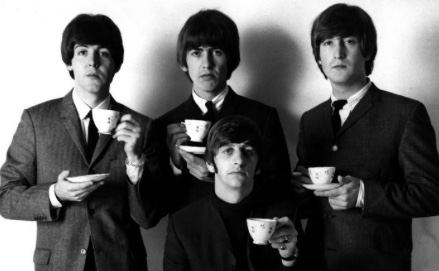
I do my best to avoid using wine jargon – but sometimes I don’t recognize it when I speak it. Asked to describe a red wine, I might talk about extraction, density and concentration — only to be met by a blank stare. Such words seem plain enough, but somehow when the subject is wine they sow more confusion than clarity. Perhaps people assume that when applied to wine these mundane terms take on arcane, specialist meanings, when, in fact, they mean pretty much what they do in any other context. In such cases, I often turn the conversation in the direction of a cup of tea.
Few people have made wine, but most of us have made a few pots of tea and we know how it works. Tea leaves are put into contact with near-boiling water. Over the course of a few minutes the pigments, tannins and other compounds inherent in the plant material are leached into the water. The hot water rapidly takes up these compounds and what results is the stimulating, restorative drink that cheers billions every day.
Brewing tea is a simple process that’s nonetheless capable of an almost infinite number of permutations and therefore of an equally crazy number of variations in the cup. Just like tea, red wine is an infusion, wherein the compounds responsible for color, aroma and texture in the skins of grapes are released into solution. The infusion medium isn’t hot water, but the juices liberated from grapes as they are crushed and degrade in fermentation.
When we talk about body, concentration or density in wine or tea, we’re really talking about (a) how much of these pigment and flavor compounds were present in the original material and (b) how much of what was present was extracted in the processing. In this sense, a winemaker is doing just what you or I do in the analogous situation: watching both the clock and the color of what’s in the pot judge when to remove the sachet or pour the water off the leaves. (In the making of most white wines there is no maceration on the skins at all.)
Ideas about how much extraction is proper for a classically balanced wine vary with individual winemakers, with critics, with consumers and with the times. Speaking for myself, I can’t say I find wine at the far end of the extraction spectrum much more appealing than a pot of tea I’ve gotten started, forgotten about and returned to find over-steeped — but it’s entirely a matter of taste and, to some degree, context. That’s why when we meet on the floor of the wine shop and try to pick something out for you to have with your supper tonight we may well start out talking about extraction, density, and concentration — and end up with tea for two.
This week in the wine corner . . .
THURSDAY OCTOBER 4, 3-6 PM – THE CUP THAT CHEERS
-
-
- 2014 Weingut Tesch “Unplugged” Dry Nahe Riesling, $21.95
- 2017 Paterna “Il Rosso” Toscana IGT, $21.95
- 2013 Il Civettaio, “Il Civettaio,” Meremma Toscana, $21.95
-
FRIDAY OCTOBER 5, 3-6 PM – RAISE THAT PINKIE
-
-
- 2017 Doniene Gorrondona, Bizkaiko Txakolina, $19.95
- 2016 Domaine Richou, “Les Châteliers” Anjou Gamay, $17.95
- 2015 Elian da Ros ‘Vin est un Fête’ Côtes du Marmandais, $17.95
-
-Stephen Meuse